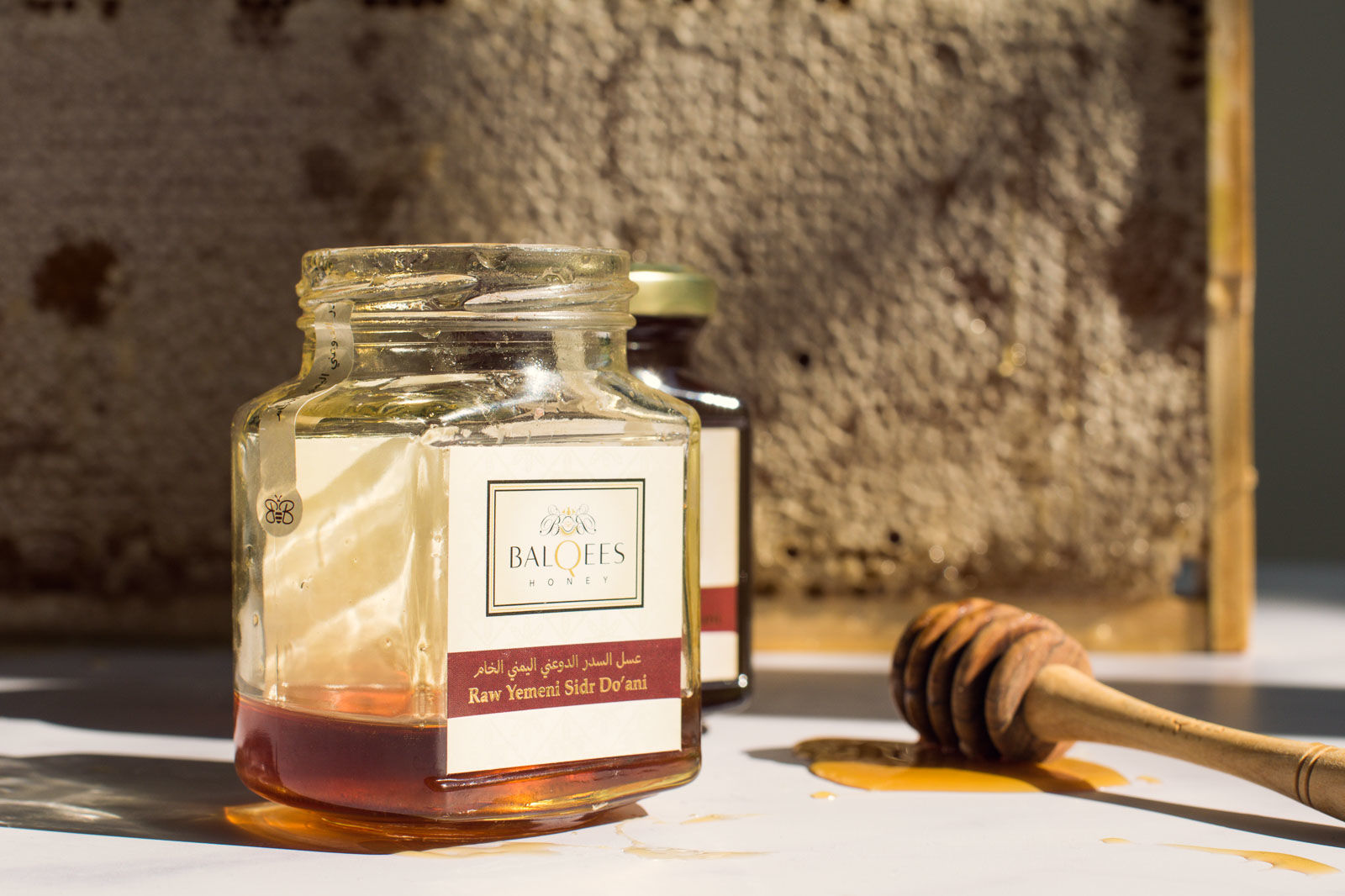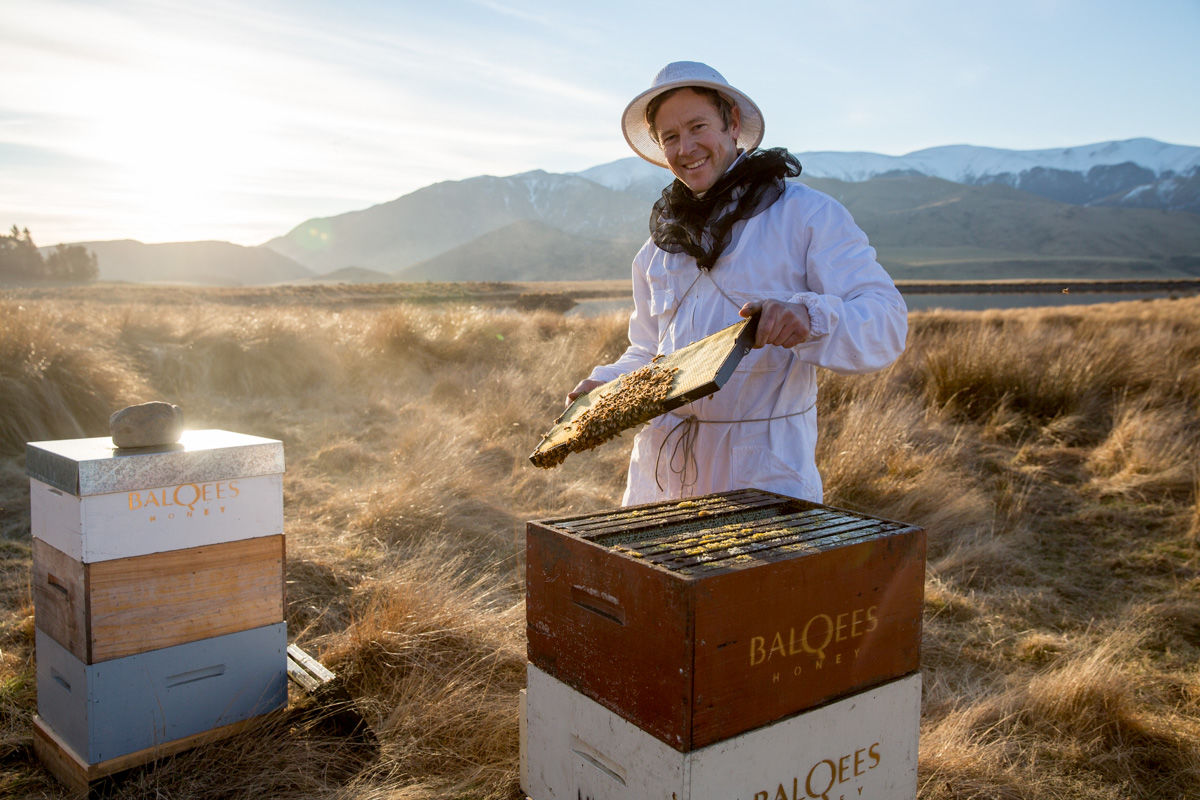But if you are sensitive to gluten, you need to research your products well. Finding out how they are made or processed is important as cross-contamination can happen at manufacture. With honey, it helps to understand how the bees make it.
How Raw Honey Is Made
In order to understand what you are eating, we need to dig deeper and know how our food is made and manufactured. Bees like humans need a variety of food sources and nutrients and so they get these from nectar, the sweet liquid that collects in the middle of flowers and from small grains called pollen (from the stamen of flowers). Nectar is delivered to the hive where bees collect it and pass it mouth-to-mouth, reducing the moisture content and changing the nectar into honey. The bees are good housekeepers and, before returning to the flower again for more pollen, thoroughly clean and care for themselves and the hive.
This is true, raw honey – harvested with the least amount of handling by humans from hive to table. It should not be heated, micro-filtered or flash-pasteurised. This is why authentic raw honey is gluten-free and suitable for people who are gluten-intolerant or have celiac disease (coeliac).
Gluten intolerance and celiac disease
Gluten is a protein found in wheat, barley and rye. People who are sensitive to these can suffer with digestion issues, symptoms can also include joint pain and fatigue, which is gluten intolerance.
Celiac (or coeliac) disease is an autoimmune disorder that causes a reaction to the gluten found in these grains (and sometimes oats). This causes the cells lining the small intestine to be damaged and inflamed. According to the Celiac Disease Foundation, there has been an increase in people being diagnosed (1 in 100 people in the UK suffer from the disease). There is no cure as yet, and the causes can be hereditary or as a result of extreme stress, intestinal damage or due to eating foods the body has difficulty digesting.
The damage to the lining of the small intestine hinders the ability to absorb nutrients from food into the bloodstream. This is why it’s important for all of us to pay attention to what we put into our bodies and how it makes us feel.

Does some honey contain gluten?
Knowing where your honey originates from (and where the hives are situated) is extremely important.
If the bees collect pollen near to agricultural land growing grains containing gluten, dust can get inside the hive and contaminate the honey and beeswax. Mass produced honey is usually made from a blend so it’s very difficult to check whether what’s inside the jar is free of gluten. In the USA in particular, farmers rent hives to pollinated their crops then the hives are moved onto another farm. Some large manufacturers also feed a wheat-based product to the bees.
This is why, if you are gluten-free or celiac, it is advisable to buy raw honey that has come from artisan beekeepers and co-operatives who take pride and care in their honey production. If the hives are in remote locations away from agriculture then there is no risk of contamination (plus the raw honey is packed full of enzymes and nutrients that are good for the body too).
Buying from small artisan beekeepers especially in remote pristine locations (as we do at Balqees) gives you confidence you are feeding your body with something pure and natural that will heal and not harm your body.
Organisations like The Celiac Disease Foundation and Celiac UK include raw honey on their lists of what can be eaten. It should be noted that people who are gluten intolerant will usually not be sensitive enough to react to any traces of gluten in contaminated honey. Celiacs, however, do need to be careful.

Gluten-free, raw honey from remote locations
Buying raw honey direct from the beekeeper is essential to know where it comes from. Riath, Balqees founder, visits the beekeepers personally and gathers rare honey from around the world. They all have interesting stories and unique properties – and of course, they are all gluten-free. Here are just a few:
Raw Chilean Mountain Honey – The Andes and glacier covered mountains means this mono floral raw honey comes from one of the remotest rural places and the Ulmo tree. Chilean tribes have used it to treat wounds and common skin ailments for centuries due to its antibacterial and antibiotic properties.
Raw White Mountainous Honey – This creamy raw, white honey comes from the pristine alpine meadows on the Eastern side of Lake Issyk-Kul, in the Tien-Shan Mountain region, Kyrgyzstan. It’s made solely from the nectar of wild flowers that bloom during the summer, making it pure white in colour and intensely floral. It is considered to be one of the most ecological raw honeys in the world.
Raw Black Beech Honey Dew – This smooth silky raw honey is produced in one of the world’s remotest and most pristine wild habitats, New Zealand’s South Island. The bees collect the sweet dew found naturally on the native Black Beech ( Nothofagus Solandri) tree unique to this region and the Southern Alps. It is responsibly harvested, traceable, sustainable, and has minerals, trace elements and natural complex sugars and antioxidants in greater levels than average flower honeys. These are helpful in maintaining and promoting beneficial bacteria in the gut, especially in the recovery of healthy gut function after taking antibiotics.
Cave Honey – This is an extremely rare, raw honey which is harvested from caves or Kahouf (Arabic for ‘cave’) high in the mountains Wadi Amd, Hadramout in the southern end of the Arabian Peninsula, Yemen. In wild hives and protected from the elements, the honey isn’t exposed to the sun so retains its thick liquid gold quality and the nutrients it contains.
Raw Himalayan – Raw honey from Sidr tree nectar in the remote Himalayan countryside. Hives are located far away from any urbanisation and deep in the forests. Like all truly raw honey, it is loaded with essential minerals and antioxidants.
Know your beekeeper
We are always looking for the cleanest environments around the world working with small co-operatives and beekeepers who understand, respect and care for their bees which results in the excellence of their raw honey. This type of raw honey can be included in your diet, and may even help to heal the gut and ease some of your digestive issues. For more information read Why Raw Honey Should Be In Your Medical Cabinet. Read more about Riath’s visit to the beekeepers in Kyrgyzstan, and New Zealand’s South Island for the Black Beech Honeydew.
If you have issues with gluten intolerance or have Coeliac disease, have you ever had a reaction to honey? Do you need more information about gluten and raw honey? Let us know in the comments.










